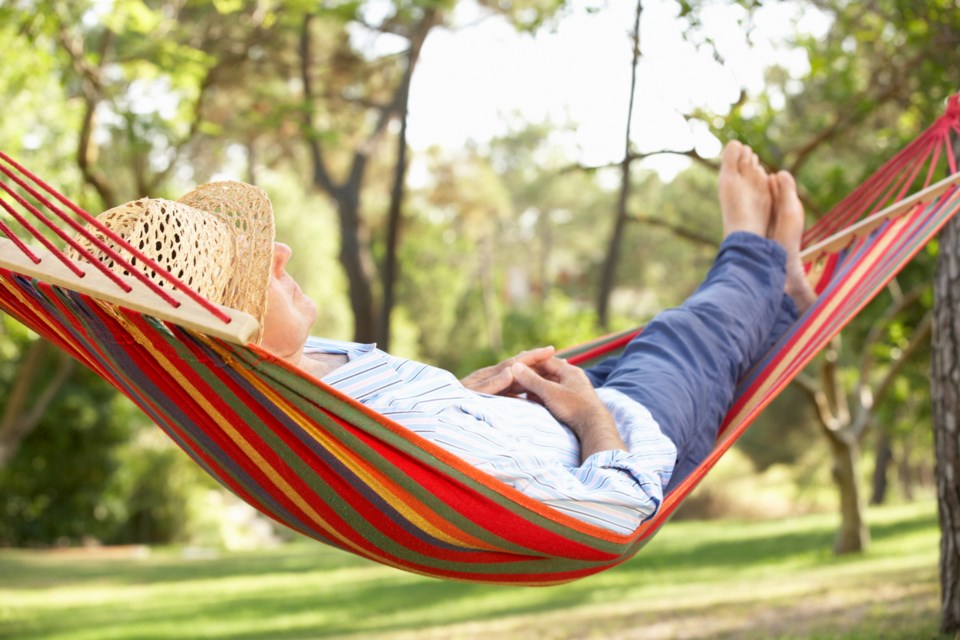When the long-awaited warm sunny weather arrived in Toronto over the weekend, hundreds flocked to Trinity Bellwoods Park in the city’s west end. Ontario Premier Doug Ford said it looked like a “rock concert,” but added that he understood people wanted to be outside and enjoy the outdoors.
These days, with social distancing rules still in place, it can be difficult to get outdoors, and to know whether or not to. High-rise apartment buildings have elevator limits. Neighbourhoods may have more parking lots than parkland. Or it could be that you are caring for someone with a high risk of developing severe illness from a COVID-19 infection.
Hikes, picnics or bike rides along a tree-lined path feel a long way off when you’re quarantined in a low-light basement apartment or a balcony-less condo, and you’re screen-saturated from work, school and social gatherings.
This sense of disconnection from the natural world is not surprising. Even prior to coronavirus lockdowns, most of us were spending 90 per cent of our time indoors.
Marika Chandler, Ontario director of Outward Bound Canada, says those of us living in urban environments were already experiencing the ill effects of high-density living and limited green space. Now, those green spaces are “taped off, locked, under the threat of financial punishment if you use them,” or packed full. And yet, “the positive impacts on our mental health from time spent in nature is essential — for all ages, all genders, all abilities, all people,” she says.
Getting our green in right now, however we can, can help us repair the nature deficit we might be feeling, honour our biophilic urge, nourish our mental well-being and harness the awe-inducing restorative and resiliency benefits of the outdoors.
Hardwired for nature
The desire for more green time might be the result of a “nature deficit.” Author and nature advocate Richard Louv describes nature-deficit disorder as a phenomenon — not a true diagnosis — that shows up as challenges with focus, clear thinking, physical health and mental well-being.
As co-creator of Ryerson University’s Thriving in Action program, resilience lecturer, co-ordinator of the campus nature-walking and paddling programs and president of Canada’s Learning Specialists Association, I teach and conduct research on the intersection of learning, well-being, equity and nature.
Our lust for nature is real. The concept of biophilia, popularized by E.O. Wilson, professor emeritus of biology at Harvard University, holds that humans have an inherent love of and desire to be near and in nature.
Given this tension between our attraction to the natural world and our current indoor isolation, it’s not surprising that “our connection with nature can feel like it’s slipping away right now,” says Barbara McKean, head of education at the Royal Botanical Gardens in Hamilton, Ont., and the driving force behind the Back to Nature Network, a web of organizations that aim to restore children’s relationship with the outdoors.
This disconnection might feel additionally poignant given the time of year. “To not have contact with other humans, and with the outdoor world, in springtime no less, is a true deficit,” says Jeffrey McGarry, an outdoor educator and researcher.
Nature as a stress reducer
Prior to the coronavirus, many of us commuted to workplaces by foot or bike, enjoyed outdoor excursions and had our sights set on summertime camping and cottaging. Now, COVID cabin fever might be setting in.
“As we move to an ever-more virtual world, feeling trapped in our living quarters, we are craving a return to nature and its benefits,” says Marija Padjen, director of the Centre for Innovation in Campus Mental Health, a partnership that supports mental health capacity-building and resource-sharing on post-secondary campuses.
Alongside daily reports about COVID-19’s spread, so too are there growing concerns about the strain of lockdown, isolation, fear and grief on our mental well-being, especially for youth. Yet just as this time of uncertainty can amplify stress, anxiety and overwhelm, so too can we mobilize our individual and collective resilience.
Time in nature can play a key role in fostering this resiliency. Abundant research makes clear that spending time outdoors can ease some symptoms of depression, enhance memory and cognitive function, reduce stress and improve creative thinking and problem solving.
For those who cannot get out, studies also make clear that views of nature, caring for plants and even digital images of nature can have positive impacts on stress. Roger Ulrich, health-care design researcher, has shown that people recover from surgery faster when they could see green space due to increased positive feelings, reduced fear and eased pain.
Inviting the outdoors in
“We also know that nature inspires awe,” encourages Linda Graham, the author of Resilience: Powerful Practices to Bounce Back from Disappointment, Difficulty, and Even Disaster. “ … the measurable impact of awe in nature is resilience, the capacity to face and deal skillfully with the difficulties of life.”
There may be no better time to intentionally bask in the wonder of seedlings emerging in an indoor garden, the sound of early morning birdsong sitting by a screen door, or if accessible and spacious enough, the experience of walking along a favourite ravine or trail.
By walk or by window, safely harvest the restorative benefits of the available nature — budding trees, spring’s changeable weather and the sky’s clouds and colours. Much of it might have passed by unnoticed prior to the pandemic.![]()
Deena Shaffer, Instructor, Sociology, Ryerson University
This article is republished from The Conversation under a Creative Commons license. Read the original article.
